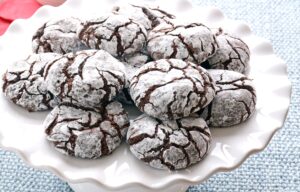




Looking for a clean label formulation for your bakeshop or tortilla shop? Panhandle Milling has been famous for its tortilla flour since 1985. We pride ourselves on producing the best quality tortilla flour with consistent results every single time. To assist you in your tortilla production, we thought we’d share some of the basic information you need for good flour tortilla formulation. This is the regular tortilla section. We’ll add more flavors and formulas as time moves onward.
There are three methods generally used for the formation of circular tortillas: hot-press, die-cut, and the traditional hand stretch. The hot-pressing method is increasing in popularity, mainly because it is ideal for automated tortilla production and it gives the consistent quality and characteristics that customers are trying to achieve. At home or in smaller production tortilla shops, hand stretching is still the preferred method. We know that it is the preferred method of our Panhandle culinary staff as well as any Mexican grandmother. That’s not a bad thing! It’s tradition. In this post, we’ll share a larger scale formulation as well as a more “family-friendly” recipe. You decide how many tortillas you want to make!
Flour is the most important ingredient for perfect tortillas. Panhandle Tortilla Flour for hot-press tortillas has a protein content around 11.5 percent. Never use weak flours with low gluten content. They will give you tortillas of inferior quality that split, crack and tear easily after overnight storage. Overly strong protein flours need longer resting times before they can be pressed.
Fat. The use of fat makes it easier to manipulate the dough by reducing the stickiness of the dough. They are also more extensible and less elastic, therefore easier to press into tortillas. High levels of shortening are also essential to prevent the tortillas from losing their ability to be folded without cracking.
Preservatives are generally added to extend mold-free shelf life. It is important to control the final pH of the tortilla since preservatives like propionates and sorbates lose their effectiveness above pH 6.0 to 6.5. Since sorbates are more effective than propionates from pH 5.5 to 6.5, it is advised to use sorbates instead of propionates in this pH range. When using baking powder, it is best to use sodium propionate instead of calcium propionate, because calcium can interfere with the baking powder salts.
Baking powders affect the fluff of the tortilla while baking and influence the final pH of the baked product. Baking powders are based on sodium bicarbonate and “just right” amounts of leavening acids. They are generally used in tortilla formulations at levels between 1 and 3 percent, depending on how puffy the tortilla is intended to turn out. It is a fine balance. Why? Because a low pH is needed to extend the shelf-life of tortillas and prevent mold, but a higher pH improves the quality and consistency of the tortillas. Some bakers insist on using yeast in tortillas for the leavening, as they believe it improves the flavor of the tortilla. This method is most popular in fat-free tortilla production when there isn’t the mouthfeel of the fat in the dough.
Reducing agents are used to improve dough. They reduce the elasticity of the dough and make it easier to roll. This is done by the addition of compounds that block the bonds in the gluten proteins. These include L-cysteine, glutathione (present in non-leavening yeast), fumaric acid, sorbic acid, and sodium (bi)sulfite. In this formulation, we use Sorbic acid both as a reducing agent and as a preservative. It is a preservative originally derived from the berries of the rowan tree. The tree is also known as the mountain ash tree or by its scientific name of Sorbus aucuparia. Sorbic acid can also be produced synthetically. It slows the growth of yeast and mold and is widely used as a preservative in foods and skin products. It is considered nontoxic.
Other ingredients are used for tortillas such as salt (usually 1 to 2 percent of flour weight) and fat replacers. Gums, starches and non-leavening yeast increase water absorption and keep the tortillas from getting too dry during baking. We use a little xanthan gum in our recipe. It is natural and does add to the finished shelf-life of the tortillas as well as the pliability.

Just want to Make Some at Home?
5 cups Panhandle Milling Tortilla Flour
1 Tbsp. salt
1 Tbsp. baking powder
1 cup shortening or lard
2 cups boiling water
Directions:
#tortilla #tortillaflour #cleanlabel #formulation #homebaker